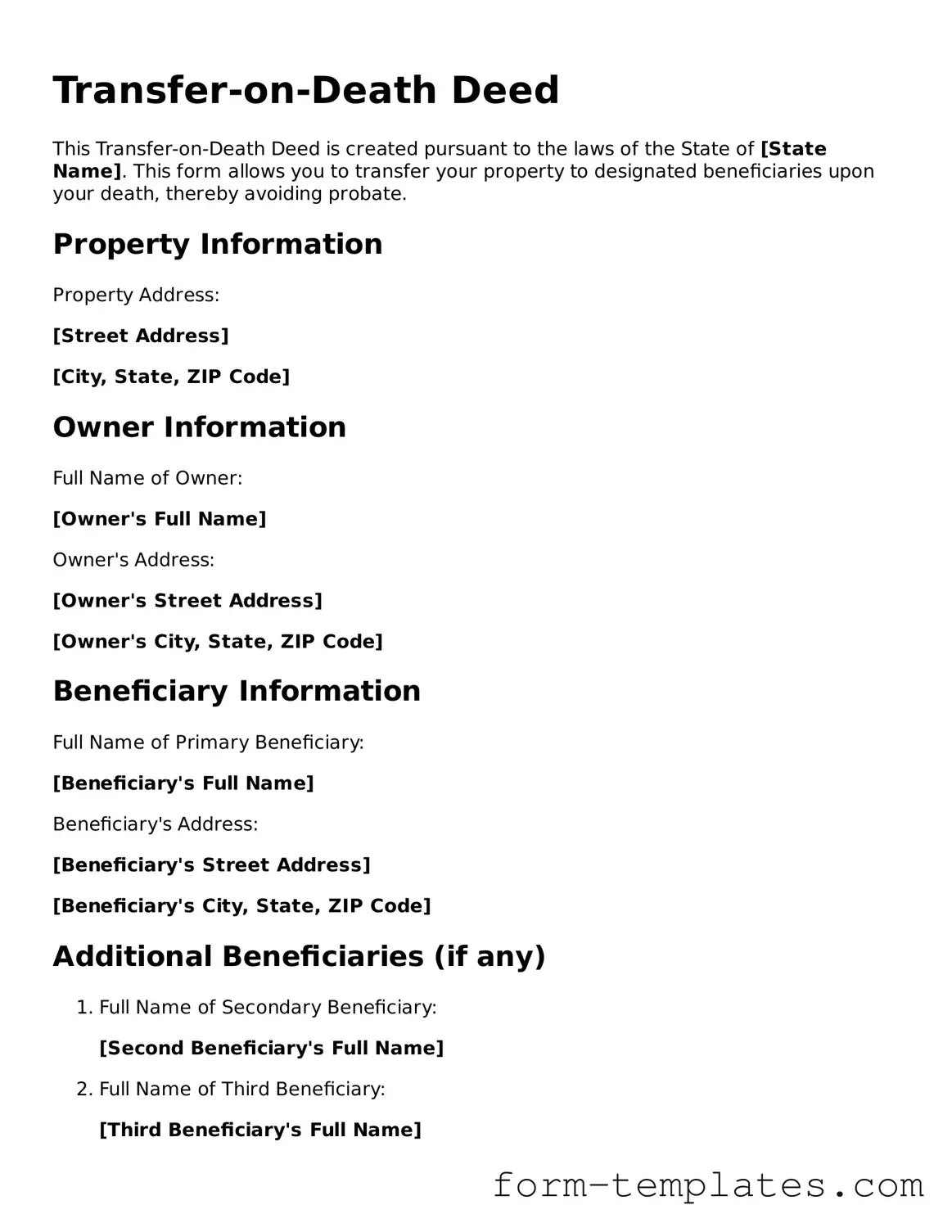Transfer-on-Death Deed
This Transfer-on-Death Deed is created pursuant to the laws of the State of [State Name]. This form allows you to transfer your property to designated beneficiaries upon your death, thereby avoiding probate.
Property Information
Property Address:
[Street Address]
[City, State, ZIP Code]
Owner Information
Full Name of Owner:
[Owner's Full Name]
Owner's Address:
[Owner's Street Address]
[Owner's City, State, ZIP Code]
Beneficiary Information
Full Name of Primary Beneficiary:
[Beneficiary's Full Name]
Beneficiary's Address:
[Beneficiary's Street Address]
[Beneficiary's City, State, ZIP Code]
Additional Beneficiaries (if any)
- Full Name of Secondary Beneficiary:
[Second Beneficiary's Full Name]
- Full Name of Third Beneficiary:
[Third Beneficiary's Full Name]
Signature and Date
The undersigned owner hereby revokes any prior Transfer-on-Death Deeds made for the above-described property and declares this to be the Transfer-on-Death Deed in accordance with the laws of [State Name].
Owner's Signature: ______________________ Date: _____________
Witnesses (if required by state law)
- Witness 1 Name: ___________________ Signature: _____________________
- Witness 2 Name: ___________________ Signature: _____________________
